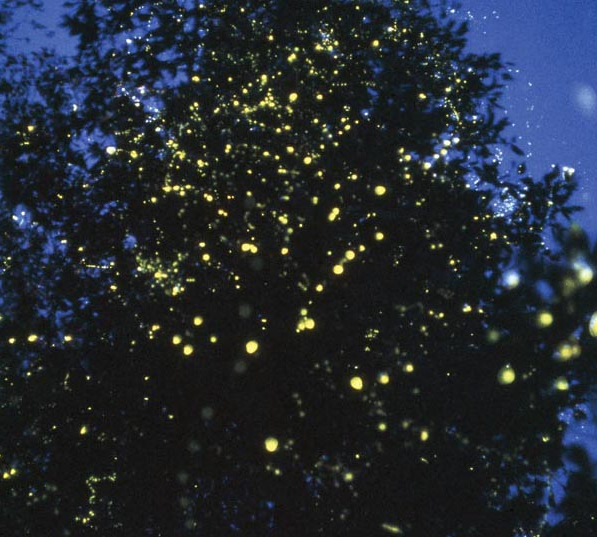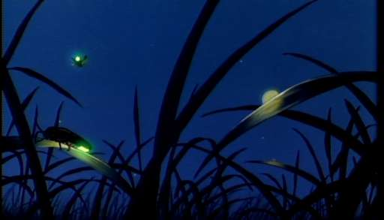
Synchronous Flashing in Southeast Asian Fireflies
Biology 342 Fall 08 - Matt Hagen and Laurel Oldach
Bioluminescence
Brain Control
bioluminescence occurs differently in different bioluminescent species. In the majority of simpler luminescent organisms, including some firefly relatives, glows are consistent and largely unregulated, except to be activated or deactivated. In contrast, Pteroptyx malaccae and several related species use highly complex brain control to regulate flash timing and send meaningful mating signals to potential mates. In both synchronizing and nonsynchronizing species, flashing is under nervous control, and may happen either spontaneously or in response to an external light signal. (Buck 1988).
From brain to photocyte
Signals originate in the central nervous system, from where they travel to synaptic terminals centered around the tracheae—the firefly's air distribution system. Around these synapses there is an unusually high concentration of the enzyme nitric oxide synthase (NOS) (Aprille et al.). Most current research suggests that nitric oxide (NO) plays a role in precise temporal control of flashing. Upon receiving a neural signal, trachael cells activate NOS and open oxygen gates.
Intracellular Mechanism
Photocytes are compartmentalized with mitochondria densely packed into the peripheral cytoplasm and with luciferin and luciferase-containing peroxisomes within. (Greenfield 1994). The hypothetical triggering mechanism:
Once in the photocyte, NO inhibits mitochondrial respiration and allows oxygen levels in the cell's interior to rise. This triggers light-emitting reactions within the peroxisomes.
The light we observe is the result of a 2-step chemical reaction. In the first step, the enzyme luciferase catalyzes the Mg-ATP dependant adenylation of its substrate lucifrin. Thus activated, luciferin reacts with oxygen in a series of steps that releases a photon. (Aprille et al.).

(Image from Miyazaki's film Grave of the Fireflies)